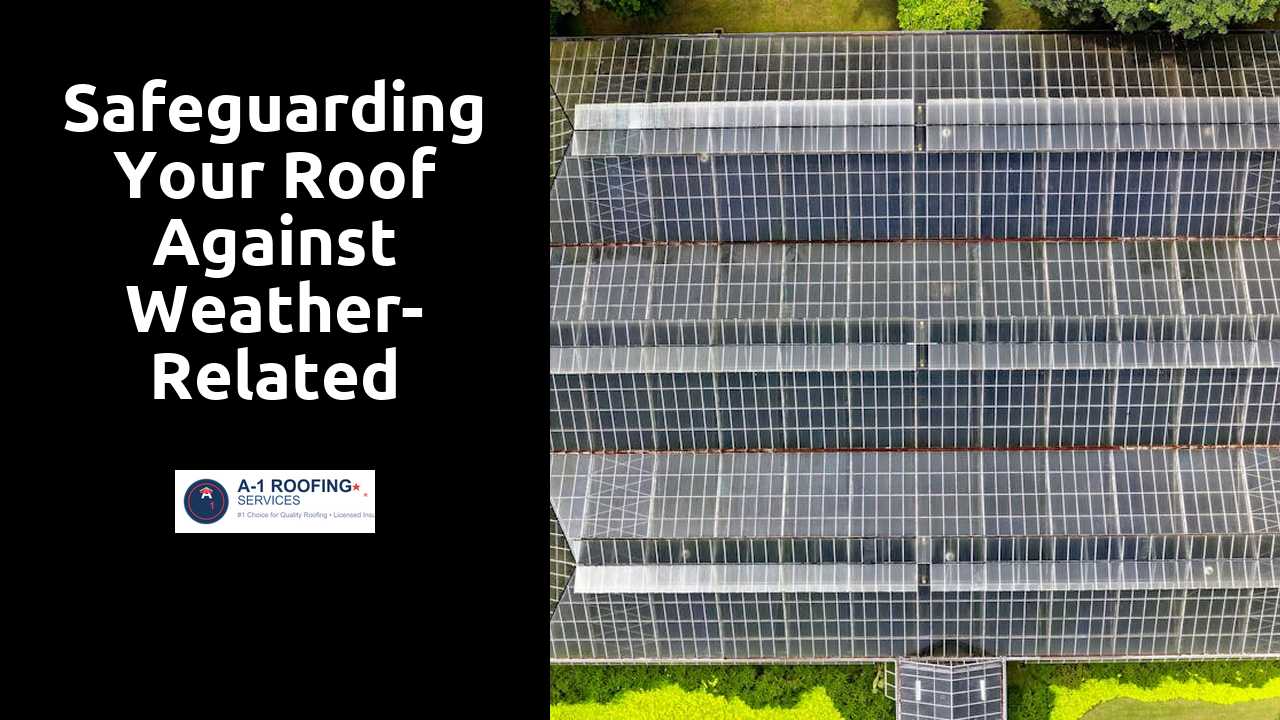
Safeguarding Your Roof Against Weather-Related Damage
Table Of Contents
Keeping Gutters and Downspouts Clear
Regular maintenance of gutters and downspouts is essential for preventing water accumulation on the roof. When debris such as leaves and twigs block these channels, rainwater cannot flow freely. This can lead to overflow, allowing water to seep under shingles and into the roof structure, ultimately causing significant damage over time.
Clearing gutters and downspouts not only protects the roof but also helps safeguard the foundation of the home. Water that pools around the foundation can lead to erosion and structural issues, which can be costly to fix. Routine cleaning, especially during fall and after heavy storms, ensures that these systems function effectively, directing water away from the home and maintaining overall roof health.
Hop over here to discover more.
How Clogged Gutters Contribute to Roof Damage
Clogged gutters can lead to an array of issues, primarily by obstructing the flow of water away from the roof and foundation. When leaves, debris, or ice accumulate in gutters, rainwater can overflow, pooling on the roof surface. This excess moisture facilitates the growth of mold and mildew, contributing to potential rot in roofing materials over time.
In addition to causing water damage on the roof, clogged gutters can also affect the structural integrity of a home. Persistent water accumulation can lead to the deterioration of shingles and underlayment, creating a pathway for leaks that may reach ceilings and walls. Regular maintenance of gutters is essential for preventing these problems and ensuring the longevity of the roof.
Adding Insulation to Your Roof
Proper insulation plays a crucial role in maintaining a comfortable indoor temperature and reducing energy costs. It acts as a barrier against heat loss during colder months and prevents heat gain in the summer. When insulation is installed correctly, it enhances the overall efficiency of the home's heating and cooling systems. This reduces the strain on HVAC units, leading to longer lifespan and lower utility bills for homeowners.
In addition to energy efficiency, effective insulation contributes to the longevity of the roof itself. By regulating temperature and moisture levels in the attic space, it helps prevent issues like ice damming in winter and excessive heat buildup in summer. These conditions can cause significant damage over time, including warping, rot, and deterioration of roofing materials. Adequate insulation, therefore, serves both functional and protective purposes, ultimately safeguarding the integrity of the roof.
Benefits of Proper Insulation in Weatherproofing
Adequate insulation plays a crucial role in maintaining a comfortable indoor environment while also protecting your roof from the harsh effects of extreme temperatures. By preventing heat loss during cold months and keeping your space cool in the summer, insulation reduces the temperature fluctuations that can lead to the expansion and contraction of roofing materials. This stability is essential for minimizing damage to shingles, seams, and structural components.
In addition to temperature regulation, proper insulation helps reduce energy costs. A well-insulated roof ensures that your heating and cooling systems do not have to work as hard to maintain desired indoor temperatures. This efficiency translates into lower utility bills and a reduced carbon footprint. Furthermore, reduced energy consumption can prolong the lifespan of your HVAC system, adding to the overall health of your home.
Understanding Roof Ventilation
Proper roof ventilation is essential for maintaining a healthy roof and overall home environment. It facilitates the flow of air through the attic space, allowing moisture to escape and preventing heat from becoming trapped. When warm, moist air is allowed to linger, it can lead to various issues such as mold growth, wood rot, and even structural damage over time. By ensuring that your roof is properly ventilated, you can protect your home from these potential hazards and prolong the lifespan of your roofing materials.
There are several methods for achieving effective roof ventilation, including ridge vents, soffit vents, and gable vents. Each option allows for the efficient exchange of air, enhancing the performance of your roofing system. Inadequate ventilation can create a range of problems, particularly in extreme weather conditions. By addressing ventilation needs, homeowners can improve energy efficiency and create a more comfortable living environment. Understanding these aspects can significantly contribute to the durability of your roof in varying climate conditions.
How Ventilation Affects Roof Longevity
Proper ventilation plays a critical role in maintaining the overall health of your roof. Without adequate airflow, heat and moisture can become trapped in the attic space. This accumulation often leads to premature aging of roofing materials and can create a breeding ground for mold and mildew. Elevated temperatures during summer months can also increase the likelihood of shingle degradation, ultimately reducing their lifespan.
In winter, improper ventilation can cause ice dams to form along the eaves. These ice dams develop when warm air causes snow to melt on the roof, only for the water to refreeze upon reaching the colder edges. This cycle not only disrupts the roof’s structural integrity but can also lead to leaks that compromise the interior of your home. Ensuring effective ventilation mitigates these risks, promoting a longer-lasting roof and preserving the investment in your home.
Related Links
The Importance of Landscaping in Roof MaintenanceThe Benefits of Regular Roof Cleaning for Preventative Care